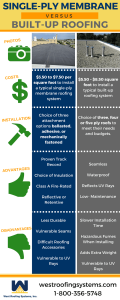Mull Over The Prices And Benefits Of Solar Installation To Discover The Prospective Economic Gains Awaiting Those Considering This Renewable Resource Investment
Mull Over The Prices And Benefits Of Solar Installation To Discover The Prospective Economic Gains Awaiting Those Considering This Renewable Resource Investment
Blog Article
Content By-Gade Larsen
When considering the costs of solar installation, you may wonder about the ahead of time investment needed and whether it aligns with the potential long-lasting benefits. Understanding the complexities of these expenditures and the numerous aspects affecting the general return can shed light on the value proposition of transitioning to solar power. By examining both the initial setup prices and the predicted savings gradually, you can acquire insight into whether the investment in solar installation holds promise for your economic future.
Preliminary Configuration Costs
When thinking about the prices of solar installation, the first setup expenditures play a critical role in your decision-making process. These upfront prices consist of the rate of photovoltaic panels, inverters, placing tools, and setup labor.
The cost of solar panels can vary relying on the brand, efficiency, and size you choose. Inverters are crucial for converting the sun's energy right into usable electricity and come in various kinds such as string inverters, microinverters, and power optimizers, each with its very own cost ramifications.
Mounting tools, such as shelfs and rails, is necessary to safely mount photovoltaic panels on your roof covering or residential property.
The setup labor price covers the specialist installation of the planetary system, making sure that whatever is established properly and successfully. Keep in mind that while these initial arrangement costs may seem high, there are typically discounts, tax obligation motivations, and financing alternatives offered to aid balance out the costs and make solar setup more economical in the future.
Long-Term Cost Savings Analysis
To recognize the monetary advantages of solar installment over time, it's essential to carry out a thorough long-lasting savings evaluation. While navigate to this website of solar panels might appear daunting, the long-term financial savings can exceed these prices substantially. By utilizing the power of the sunlight to create electrical energy for your home, you can potentially save thousands of bucks on your energy costs over the life expectancy of your planetary system.
One of the crucial aspects to consider in a long-lasting cost savings analysis is the decrease in your power bills. With photovoltaic panels, you can produce your electrical energy, lowering and even eliminating your dependence on the grid. This can bring about substantial savings, specifically as energy prices remain to climb.
Additionally, many federal governments use motivations such as tax credits and discounts for mounting solar panels, further improving your lasting financial savings. By benefiting from these incentives and optimizing your solar power production, you can delight in considerable financial advantages for many years ahead.
Return on Investment Calculation
Taking into consideration the monetary benefits of solar installment, it's time to analyze the Roi (ROI) calculation. Determining the ROI involves comparing the complete expenses of setting up a solar system with the monetary advantages it generates over its life expectancy.
To compute ROI, divide the web make money from the system by the total investment cost and increase by 100 to get a percentage. The ROI formula is: (Web Profit/ Total Financial Investment Cost) x 100.
For example, if the total price of mounting a solar system is $20,000, and over its lifespan, it generates savings and incomes completing $30,000, the web revenue would certainly be $10,000. Splitting solar panel installation company by the complete financial investment cost of $20,000 gives a ratio of 0.5. Multiplying this by 100 provides an ROI of 50%.
Usually, a greater ROI indicates a much more economically satisfying investment. Variables like government rewards, upkeep costs, and energy rate fluctuations can influence the ROI of solar installments. Understanding solar contractors in evaluating whether buying solar power is worth it over time.
Verdict
Finally, understanding the costs of solar installment is crucial for figuring out if it deserves the investment. By considering preliminary arrangement expenses, carrying out a long-term cost savings analysis, and computing the return on investment, you can make an informed decision regarding the monetary value of solar power. With the capacity for decreased energy costs and enhanced energy freedom, investing in solar installment can be a wise option for both your budget and the setting.
